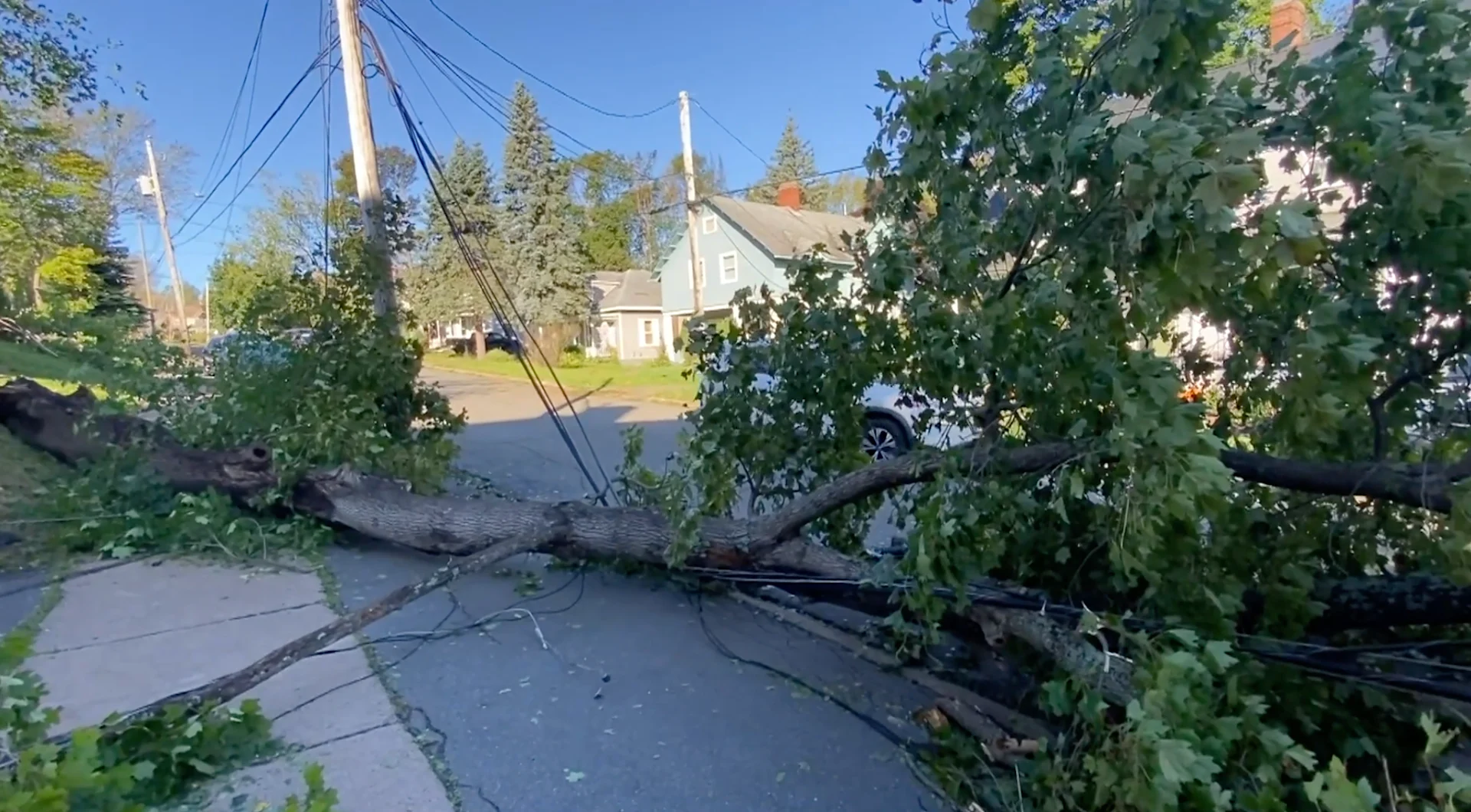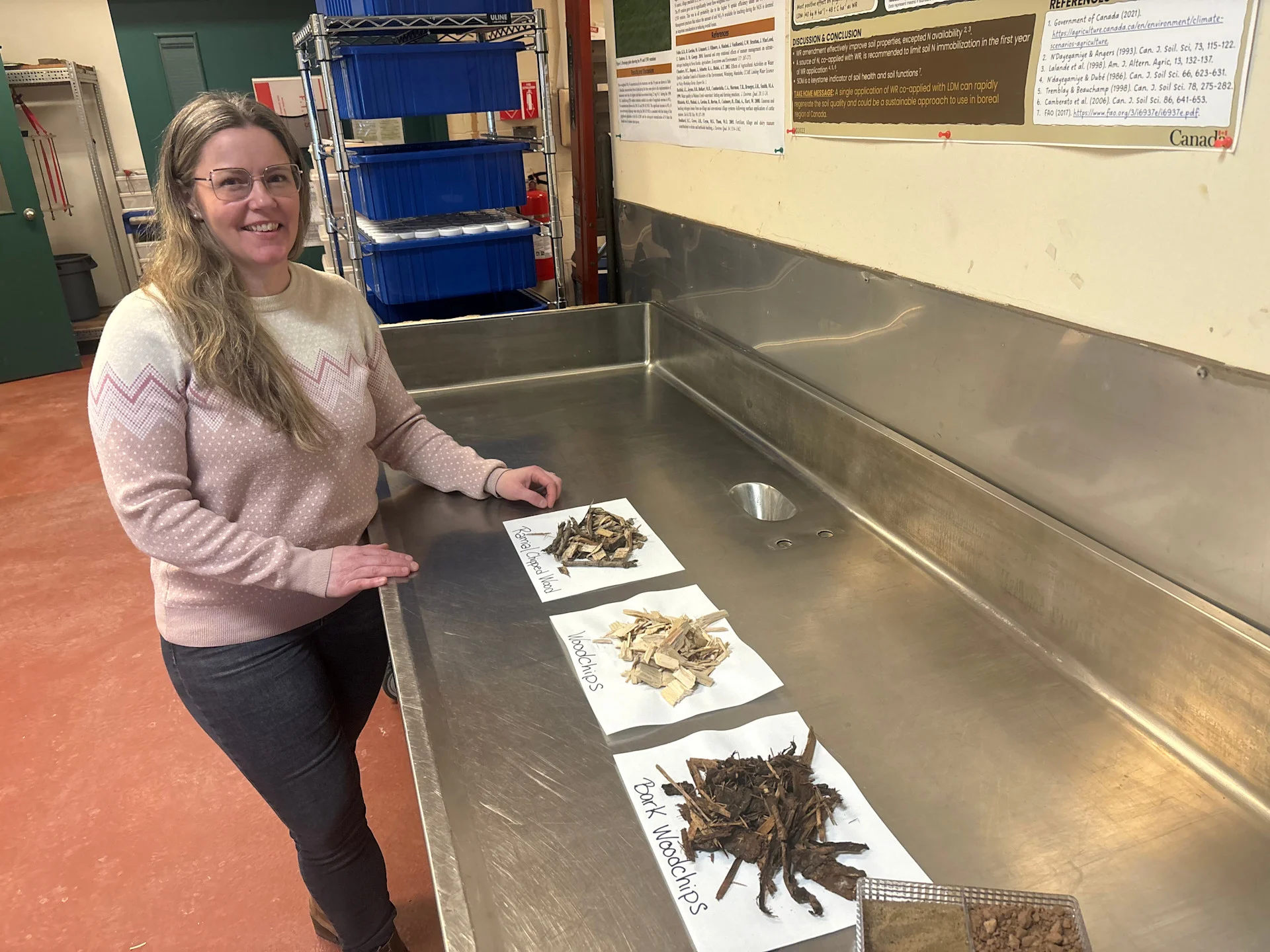
A second life: How downed trees are being used revitalize soil health
New research finds that tree debris left over from damaging storms can have a second life that improves soil quality. The Weather Network's Nathan Coleman reports.
When high winds blow, tree limbs and branches often sustain damage, creating a mess to clean up.
Tree-trimming crews tasked with clearing public roads frequently leave behind significant amounts of waste wood.
Dr. Vicky Levesque has spent the past three years studying whether this type of wood debris can be used as a soil amendment to quickly revitalize degraded farmland.

Dr. Vicky Levesque pictured with wood and soil samples (Nathan Coleman/The Weather Network)
RELATED: Why a 'tree's job isn't done' after a storm brings it down
Her research, conducted in Quebec’s Boreal region and analyzed at the Kentville Research and Development Centre in Kentville, N.S., is yielding impressive results."
Branches and debris from young trees with leaves are rich in protein and sugar.
Levesque notes that just one year after adding mulched branches to heavy grey clay soil, the fields exhibited increased microbial life, improved soil structure that facilitates water and air movement, a better pH balance, and higher carbon content.
These enhancements resulted in healthier soil with more organic matter and nutrients, greater microbial activity, and reduced compaction—conditions that support stronger plants and root systems.
The Agriculture and Agri-Food Canada research scientist shares more insights in the video accompanying this article.
